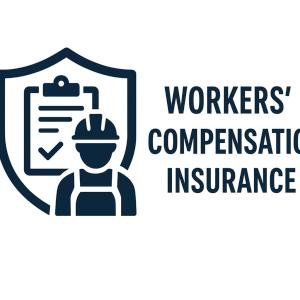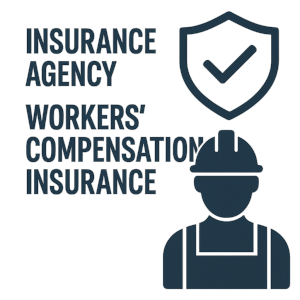In todayS competitive business landscape, controlling costs is more than a financial strategy-it’s a pathway to sustainability and growth. One often overlooked avenue for savings lies within the realm of workers’ compensation insurance. Rather than viewing workers’ comp solely as a mandatory expenditure, forward-thinking organizations are discovering the power of proactive loss control partnerships. These collaborations between employers and insurers transform risk management from a reactive necessity into a strategic advantage, capturing significant savings while fostering safer, healthier workplaces. This article explores how businesses can unlock these benefits, turning loss control into a catalyst for both financial efficiency and workforce well-being.
Table of Contents
Understanding the Impact of Loss Control on Workers Compensation Costs

Effective loss control strategies directly influence the financial health of workers compensation programs. By proactively identifying workplace hazards and implementing targeted safety measures, businesses can significantly reduce the frequency and severity of accidents.This not only safeguards employee well-being but also lowers insurance premiums and claims costs. Key components of loss control include thorough employee training, regular safety audits, and prompt incident investigations-all of which foster a culture of accountability and continuous betterment.
- Employee Engagement: Encouraging worker participation in safety programs leads to better risk recognition.
- Risk Assessment Tools: Utilizing data-driven approaches to pinpoint high-risk areas for intervention.
- Technology Integration: Incorporating wearable devices and monitoring systems to detect unsafe conditions in real time.
| Loss Control Activity |
Impact on Claims |
Cost Savings Potential |
| Safety Training Programs |
-25% claim frequency |
Up to 15% |
| Workplace Inspections |
-30% injury severity |
Up to 20% |
| Ergonomic Adjustments |
-10% repetitive stress injuries |
Up to 10% |
Building Effective Partnerships to Enhance Workplace Safety
In today’s evolving industrial landscape, fostering alliances between employers, safety experts, and insurance providers stands as a cornerstone for reducing workplace incidents. These collaborations pave the way for sharing critical insights and resources, allowing businesses to anticipate risks before they manifest into costly claims. Through consistent communication and joint initiatives, organizations can embed safety into their operational culture, transforming compliance from a mere obligation into a shared value system.
Key elements in establishing such partnerships include:
- Regular safety audits: Conducted collaboratively to identify and mitigate hazards early.
- Training programs: Tailored workshops that empower workers with hands-on knowledge and encourage proactive reporting.
- Data-driven decision making: Analyzing incident trends together to enhance prevention strategies.
- Incentive alignment: Rewarding safe behavior to motivate continuous improvement.
| Partner Role |
Contribution |
Benefit |
| Employer |
Implement best practices and provide resources |
Reduced claims and enhanced reputation |
| Safety Consultant |
Deliver expertise and training programs |
Improved workplace standards |
| Insurance Provider |
Offer risk assessments and financial incentives |
Lower premiums via proven loss control |
Implementing Targeted Risk Management Strategies for Long-Term Savings
Effective risk management goes beyond simple oversight-it requires strategic partnerships grounded in loss control methodologies. By focusing specifically on high-risk areas,businesses can implement tailored safeguards that minimize incidents and reduce the frequency and severity of workers’ compensation claims. This approach not only protects employees but also yields significant financial dividends over time, as fewer claims translate directly to lowered insurance premiums and administrative costs.
Key components of a targeted risk strategy include:
- Data-Driven insights: Leveraging injury reports and safety audits to identify vulnerable work processes.
- Employee Engagement: Fostering a safety culture where workers actively participate in hazard recognition and reporting.
- Continuous Improvement: Regularly updating and refining controls to address emerging risks and operational changes.
Consider the following example that highlights anticipated savings based on different levels of risk management maturity:
| risk Management Level |
Claims Frequency Reduction |
Estimated Annual Savings |
| Basic Compliance |
5% |
$10,000 |
| Proactive Loss Control |
15% |
$30,000 |
| Strategic Partnership |
30% |
$60,000+ |
Measuring Success and Continuously improving Loss Control Initiatives
Effective evaluation is the cornerstone of refining loss control programs. By establishing clear, quantifiable metrics-such as reduction in incident rates, cost savings, and claim frequency-organizations can track their progress and pinpoint areas needing enhancement. Leveraging data analytics tools can unlock deeper insights, revealing trends and risks that customary methods might miss. This proactive approach allows companies to adapt strategies in real time, ensuring that the partnership remains dynamic and outcome-focused.
Continuous improvement thrives on collaboration and feedback loops. Regularly engaging stakeholders-from frontline employees to insurance partners-fosters a culture of clarity and shared responsibility. Consider implementing structured review sessions that cover:
- Incident debriefs to understand root causes
- Benchmarking against industry standards
- Training updates based on evolving risk factors
- Technology assessments to enhance monitoring
| Key Metric |
Current Status |
target Goal |
| Claim Frequency |
5.2 per 100 employees |
3.5 per 100 employees |
| Average Claim Cost |
$12,450 |
$8,000 |
| Training Completion |
78% |
95% |
Q&A
Q&A: Capturing Workers Comp savings Through Loss Control Partnerships
Q1: What exactly are loss control partnerships in the context of workers’ compensation?
A1: Loss control partnerships are collaborative efforts between employers and insurance carriers or third-party experts aimed at identifying, managing, and reducing workplace risks.By working together proactively, they implement safety programs, conduct workplace audits, and promote best practices to minimize injuries and claims, ultimately lowering workers’ comp costs.
Q2: How do these partnerships translate into tangible workers’ compensation savings?
A2: By preventing accidents and fostering safer work environments, loss control partnerships reduce the number and severity of claims filed. Fewer claims mean lower claim payouts, reduced legal costs, and improved safety records, which insurers reward with reduced premiums. Over time, these savings can significantly offset the investment made in loss control initiatives.Q3: What role does data play in these partnerships?
A3: Data is the backbone of effective loss control partnerships. Detailed claims analysis, workplace injury trends, and safety audit results help identify risk patterns and prioritize interventions. Data-driven insights enable targeted strategies, ensuring resources are used effectively to prevent incidents before they happen.
Q4: Can small and medium-sized businesses benefit from loss control partnerships, or is this mainly for large corporations?
A4: Absolutely, businesses of all sizes can benefit. While larger organizations may have more resources to dedicate, many insurers and third-party providers tailor loss control programs specifically for small and medium-sized enterprises. These partnerships frequently enough provide scalable, cost-effective solutions designed to protect workers and reduce insurance expenses irrespective of company size.
Q5: What are some common loss control strategies used in these partnerships?
A5: Typical strategies include regular safety training sessions, ergonomic assessments, workplace hazard inspections, injury prevention programs, early return-to-work initiatives, and employee wellness programs. These measures foster a culture of safety and help identify trouble spots before they result in claims.
Q6: How can companies measure the success of their loss control partnership programs?
A6: Success can be tracked through key performance indicators such as a decline in injury rates,reduced frequency and severity of claims,decreased workers’ comp premiums,shorter claim durations,and improved employee morale and retention. Regular reviews and transparent reporting also ensure continuous improvement.
Q7: What challenges might companies face when establishing loss control partnerships?
A7: Challenges include aligning goals between employer and insurer, ensuring consistent communication, overcoming resistance to change within the workforce, and dedicating necessary time and resources. However, with clear leadership commitment and collaborative effort, these obstacles can be effectively managed.Q8: What is the future outlook for loss control partnerships in workers’ compensation?
A8: The future is promising. Advances in technology-such as wearable safety devices, AI-driven risk analytics, and virtual training platforms-are enhancing the effectiveness of loss control efforts. As workplace safety continues to be a priority, loss control partnerships will evolve as a critical strategy for controlling costs and protecting workers.
Future Outlook
In the intricate dance of workplace safety and financial stewardship, loss control partnerships emerge as a powerful ally for capturing workers’ comp savings. By fostering collaboration between employers,insurers,and safety experts,these alliances transform risk management from a reactive necessity into a proactive strategy.Embracing this partnership mindset not only reduces claims and lowers costs but also cultivates a safer, more resilient workforce. ultimately,capturing workers’ comp savings through loss control is more than just a fiscal exercise-it’s an investment in the well-being of people and the sustainability of business itself.










3 Comments
[…] today’s complex world of workplace safety and employee protection, choosing teh right workers’ compensation carrier can feel like […]
[…] teh ever-evolving landscape of home healthcare, Georgia’s dedicated home health aides play a vital role in supporting the well-being of countless individuals. Yet, […]
[…] in the evolving landscape of healthcare, the role of in-home care service workers has become more critical than ever, providing essential support to those who need it most. Yet, when these frontline heroes face workplace injuries, the path back to their jobs can be fraught with challenges and costs-both human and financial. Enter the innovative return-to-work programs designed specifically for in-home care service workers under workers’ compensation schemes. These programs not only prioritize the health and recovery of employees but also present a strategic approach to controlling expenses for employers and insurers alike. In this article, we explore how thoughtfully crafted return-to-work initiatives are transforming injury management into a win-win scenario, seamlessly blending compassion with cost savings. […]